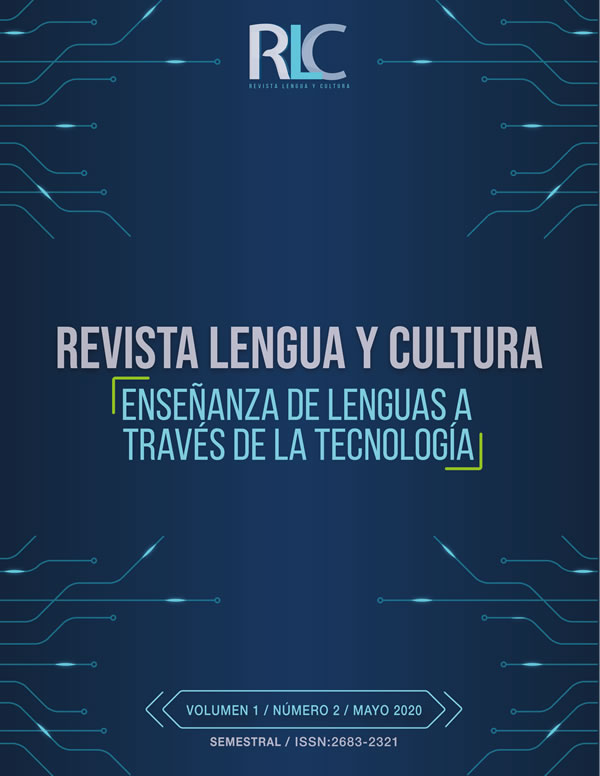Hybridization: A Foreign Language Learning Study
Abstract
Cet article est le résultat partiel d’une enquête menée auprès des étudiants du programme de Licence en Langues Modernes de l’Université de Caldas, en Colombie. Cette recherche a été de même intégrée à une deuxième étude concernant la Didactique de la Grammaire des Langues Etrangères. La recherche est née de l'hybridation linguistique que les professeurs de langue ont perçue dans la correction de la production écrite des étudiants qui apprennent simultanément plusieurs langues. Nous analysons, dans la présente enquête, le phénomène du transfert linguistique à travers un corpus de textes authentiques rédigés par des étudiants. Cette recherche est axée sur deux objectifs principaux : l’identification du phénomène de transfert au niveau scriptural et la détermination des implications pédagogiques de l’emprunt pour l’apprentissage simultané de plusieurs langues étrangères ; La méthodologie est basée sur une approche analytique et descriptive dont les instruments de collecte d'informations ont été l'entretien, l'enquête et un corpus de 50 textes authentiques produits par les étudiants. Nous avons fait une description de l’unité discursive et ensuite nous avons mené à bien une analyse de nature morphosyntaxique, sémantique et pragmatique à chaque texte. La systématisation des informations recueillies nous a fourni, parmi les conclusions, que la mixité des langues dans la production écrite est essentiellement due à leur similitude et que l'approche utilisée pour l'enseignement des langues étrangères favorise la présence du transfert lorsque l'apprentissage de plusieurs codes linguistiques a lieu simultanément.
Downloads
References
Alcaraz Varo, E. & Martínez Linares, M.A. (2004). Diccionario de linguistica moderna. Barcelona : Ariel.
Caddéo, S. & Jamet, M.C. (2013). L’intercompréhension : une autre approche pour l’enseignement des langues. Paris : Hachette Livre.
Deeds Ermarth, E. (2000). Beyond “The Subject” Individuality in the Discursive Condition. New Literary History. Vol 31. N° 3, Philosophical and Rhetorical Inquiries, pp. 405-419.
Dubois, J. et al. (2012). Le Dictionnaire de linguistique et des Sciences du Langage. Paris : Larousse.
Goossens, V. (2015). Les noms d’affect parmi les noms abstraits intensifs : nouvelles perspectives typologiques. Langues Française. N° 185, Les types nominaux, pp. 59-72.
Hernández Sampieri, R. et. al. (2006). Metodología de la investigación. 4ª ed. México: McGraw Hill.
Heredia, R. & Altarriba, J. (2001). Bilingual Language Mixing: Why do Bilinguals code-switch? Current Directions in Psychological Science. Vol. 10 (N° 5), pp 164-168.
Marquilló Larruy, M. & Matthey, M. (2008). “Discours ordinaires. Représentations des contacts dans l’apprentissage chez les enseignants et les apprenants », In : G. Zarate, D. Lévy et C. Kramsch (dirs), Précis du plurilinguisme et du pluriculturalisme, Paris : éditions des archives contemporaines, pp. 307-311
Rastier, F. (2008). Doxa et Sémantique du corps. Langages. N° 170. Discours et sens commun, pp. 54-68.
Simeoni, D. (2014). De quelques usages du concept de transfert dans la réflexion sur la traduction. En : Gin, P., Goyer, N. & Moser, W. Transfert, Exploration d’un champ conceptuel. (pp.103-117). Ottawa : Les Presses de l’Université d’Ottawa.
Yli-Vakkuri, J. (2013). Propositions and Compositionality. Philosophical Perspectives. Vol 27, Philosophy of Language, pp. 526-563.
Copyright (c) 2020 Jhon Fredy Rios Martinez, José Fernando Ramírez Osorio

This work is licensed under a Creative Commons Attribution-NonCommercial-NoDerivatives 4.0 International License.













